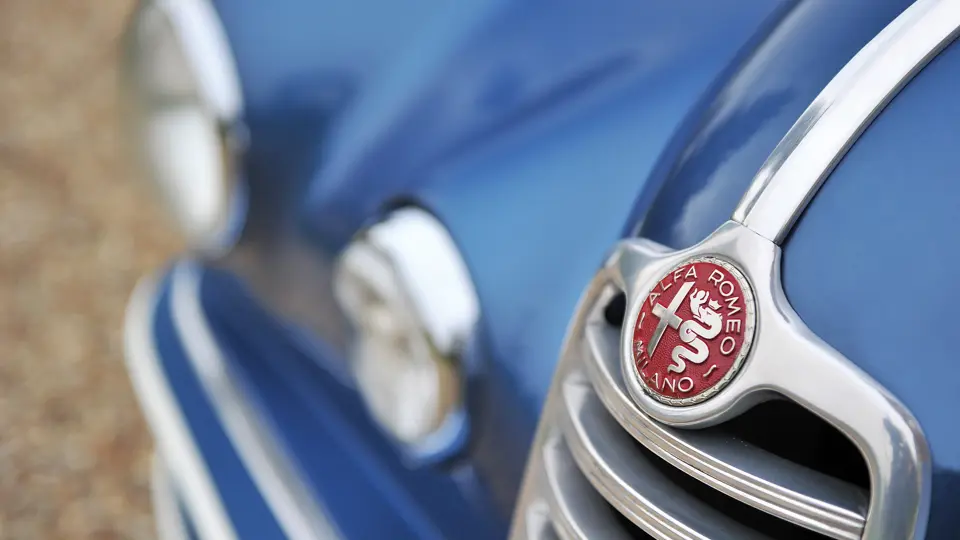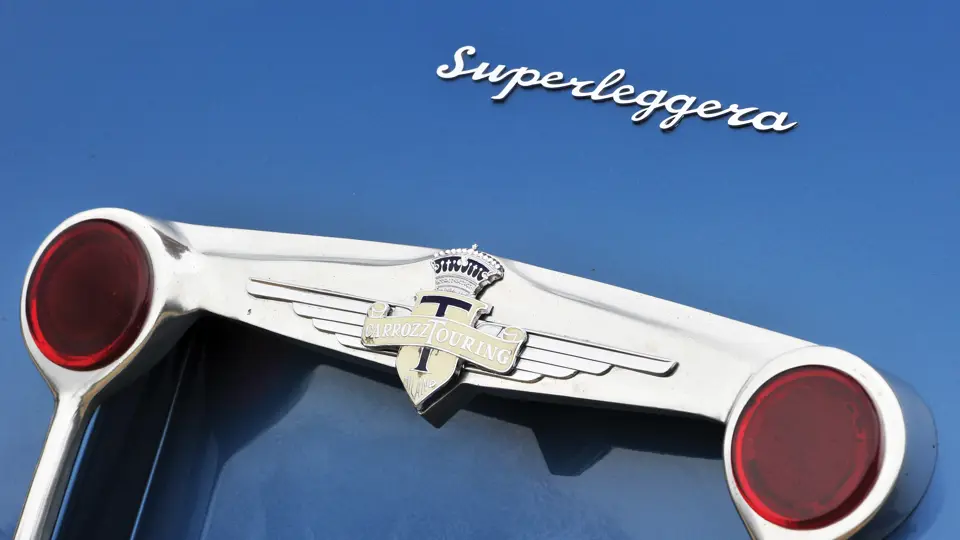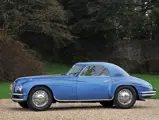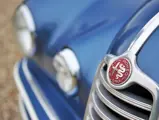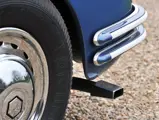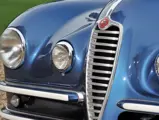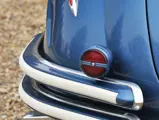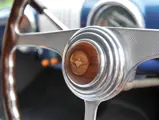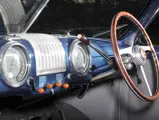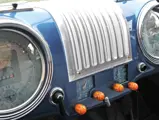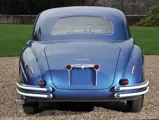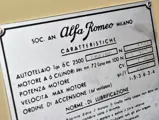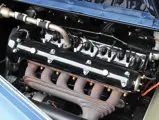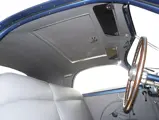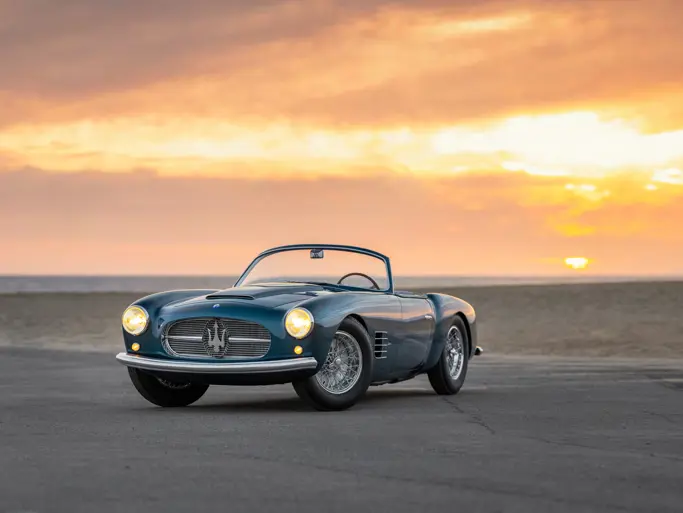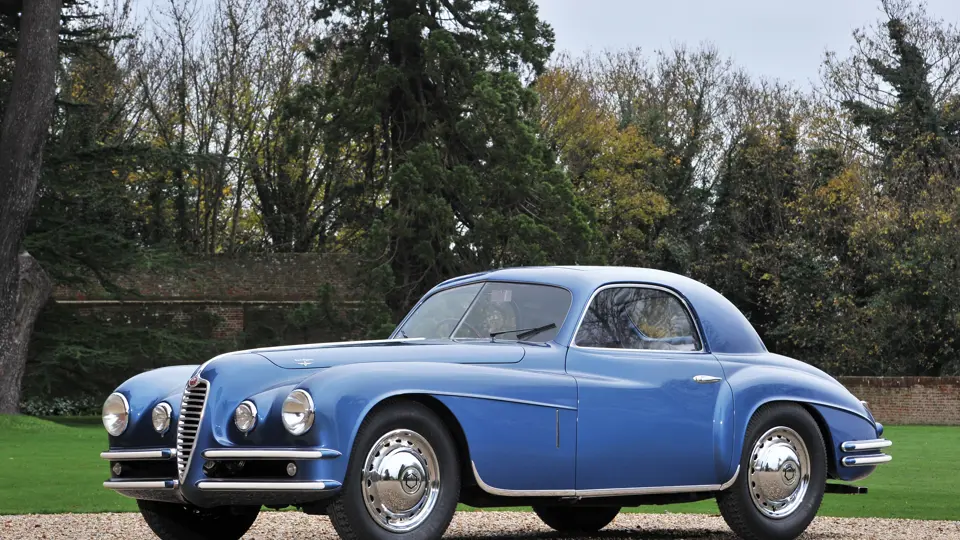
1948 Alfa Romeo 6C 2500 Super Sport Coupé by Touring
{{lr.item.text}}
€358,400 EUR | Sold
{{bidding.lot.reserveStatusFormatted}}
- Alfa Romeo’s spirited post-war gran turismo
- Lovely Touring coachwork
- Restored by Italian marque specialists
- Desirably equipped with a sunroof
- Brillante Alfa Romeo gran turismo d'après-guerre
- Élégante carrosserie Touring
- Restaurée en Italie par des spécialistes de la marque
- Désirable version avec toit ouvrant
110 bhp, 2,443 cc double overhead-camshaft inline six-cylinder engine, three Weber carburettors, four-speed manual synchromesh transmission, independent front suspension with coil springs, independent rear suspension with swing axles and torsion bars, and four-wheel drum brakes. Wheelbase: 2,700 mm
Moteur six-cylindres en ligne, 2 443 cm3, 110 ch, deux ACT, trois carburateurs Weber, boîte manuelle quatre rapports synchronisés, roues avant indépendantes avec ressorts hélicoïdaux, roues arrière indépendante par bras oscillants et barres de torsion, freins à tambours sur les quatre roues. Empattement: 2 700 mm.
In 1939, the Alfa Romeo 6C 2300 was replaced by the 6C 2500. Although the basic engine design traced its roots to the great pre-war racing machines, highly regarded automotive author and historian Griffith Borgeson characterised the 2500 as a “bridge to post-World War II production”. This change was affected by an increase in the cylinder bore of two millimetres, as well as an improved cylinder head for better aspiration and increased compression, from 6.5:1 to 7.1:1. In the Super Sport configuration, this translated into a respectable 110 horsepower, with performance aided by the Superleggera chassis construction that was developed by Felice Bianchi Anderloni, of Carrozzeria Touring.
The firm was originally named Carrozzeria Falco, but it was changed in 1926, when it was purchased by Anderloni and partner Gaetano Ponzoni. By the nature of its location in Milan, the coachbuilder was in close proximity to Isotta-Fraschini and, of course, Alfa Romeo. Although geography naturally led to early consignments from each of these marques, Carrozzeria Touring became strongly associated with Alfa Romeo, due to the stunning bodies it created for the manufacturer’s road and racing chassis of the 1930s. Touring was a leader in design and aerodynamic research, and it even had its own wind tunnel for testing.
The stunning Coupé offered here was constructed by Touring on Super Sport chassis number 915.681 and fitted with a very rare Webasto sunroof. It is believed to be a full-opening variation of the coachbuilder’s Aerolux design, which was a half-opening system. It was delivered to Svevia Srl, of Milan, on 17 May 1949, and it was later exported to the United States and then to the Netherlands, before returning to the country of its creation with the present owner. It has recently been restored by the finest Alfa Romeo workshops in Modena, including a frame-off restoration of the body by Franco Ferrari, mechanical components being overhauled by Cabrini, electrical components being restored by Rodighiero, and an interior by Maieli.
The car is finished in its original shade of Blu Oltremare Metallizzato, and it has been enjoyed for only a few kilometres since the restoration by its gentleman owner. It is supplied with manuals and an on-board tool set.
In the days after World War II, a Touring-bodied Alfa was the height of Italian style. This example reminds the modern enthusiast why.
En 1939, l'Alfa Romeo 6C 2300 laissait place à la 6C 2500. Bien que la conception du moteur ait puisé ses racines dans les brillantes machines de course d'avant-guerre, Griffith Borgeson, auteur et historien automobile à l'autorité indiscutable, considérait la 2500 comme "un pont avec la production d'après la seconde Guerre Mondiale." Les changements apportés concernaient une augmentation de l'alésage de deux millimètres, ainsi qu'une culasse améliorée pour une meilleure alimentation et une compression plus élevée, qui passait de 6,5 : 1 à 7 : 1. En configuration Super Sport, cela se traduisait par la puissance respectable de 110 ch, les performances étant favorisées par la conception Superleggera de la carrosserie, telle que l'avait mise au point Felice Bianchi Anderloni, à la Carrozzeria Touring.
A l'origine, l'atelier s'appelait Carrozzeria Falco, mais avait changé de nom en 1926 lors de son achat par Anderloni et son associé, Gaetano Ponzoni. Par sa situation à Milan, le carrossier était proche de Isotta-Fraschini et, bien sûr, Alfa Romeo. Cette proximité géographique avait débouché assez vite sur des commandes de la part de chacun des marques, mais c'est surtout avec Alfa Romeo que se développait ensuite la collaboration. La Carrozzeria Touring réalisait en effet dans les années 1930 des carrosseries splendides pour les modèles de tourisme et de course du constructeur. Touring était très en avance dans le domaine des recherches aérodynamiques et disposait même de sa propre soufflerie.
Le superbe coupé qui est proposé ici, fabriqué par Touring sur le châssis n° 915.681 et équipé d'un rare toit ouvrant Webasto, qui est une variante « pleine ouverture » par rapport au design Aerolux du carrossier, ne pouvant lui qu’ être entrouvert. Livré neuf le 17 mai 1949 à Svevia Srl, à Milan, il a été exporté par la suite aux États-Unis, puis aux Pays-Bas, avant de revenir dans son pays d'origine entre les mains du propriétaire actuel. Il a été récemment restauré par les meilleurs ateliers de Modène, dont une remise en état de la carrosserie (qui a été déposée du châssis) par Franco Ferrari, une restauration mécanique par Cabrini, la restauration méchanique par Rodighiero et un intérieur réalisé par Maieli.
La voiture est peinte dans sa teinte d'origine Blu Oltremare Metallizzato, depuis sa restauration par son propriétaire actuel. Elle est livrée avec ses manuels et une trousse à outils de bord.
Après la seconde Guerre Mondiale, une Alfa Romeo Touring était la référence en la matière de style italien. Cet exemplaire permet au passionné moderne de comprendre pourquoi.
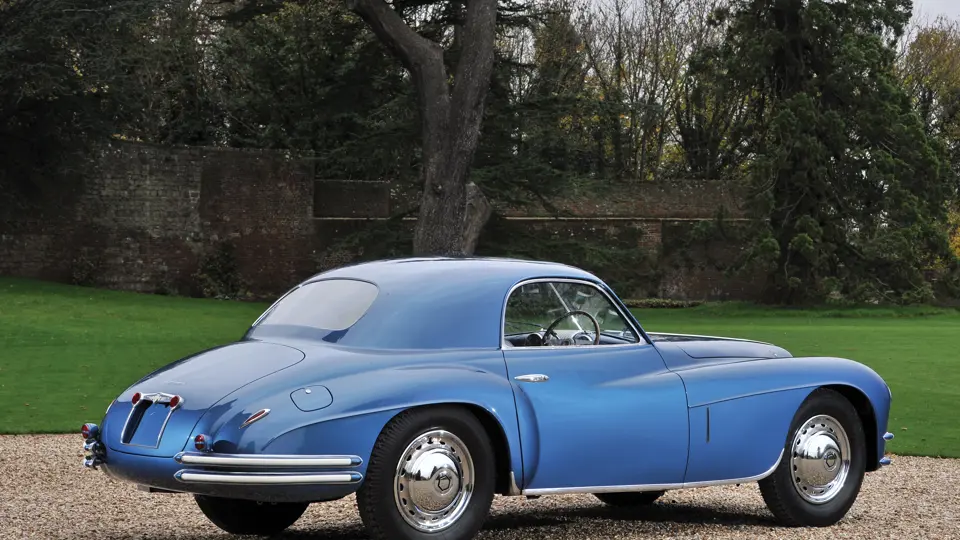
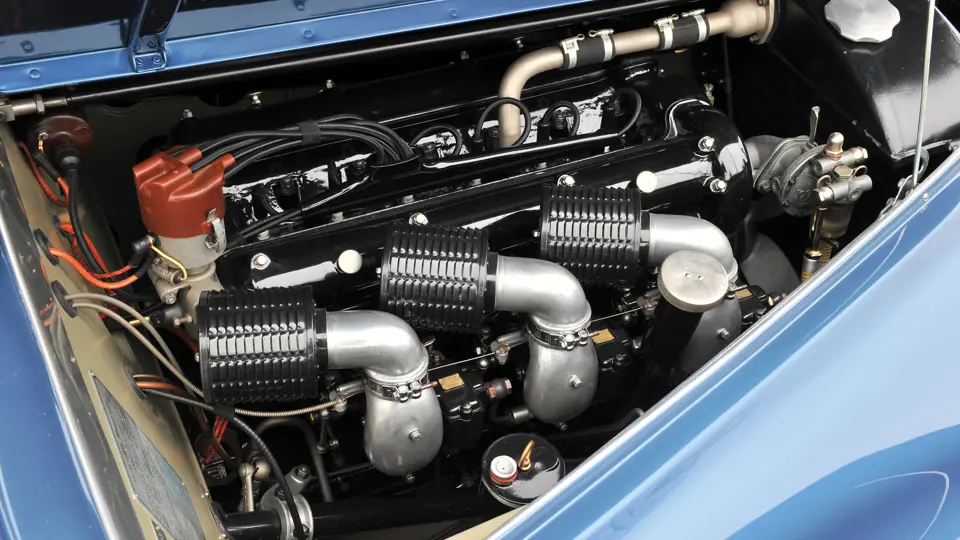


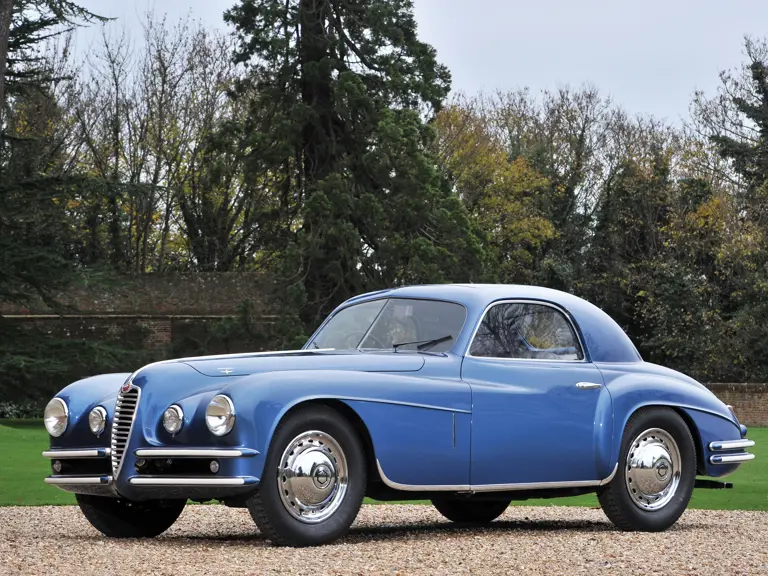
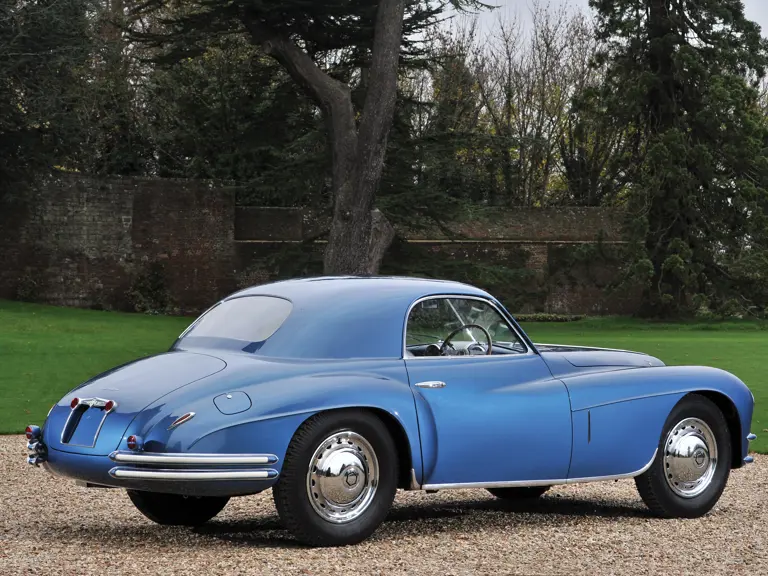

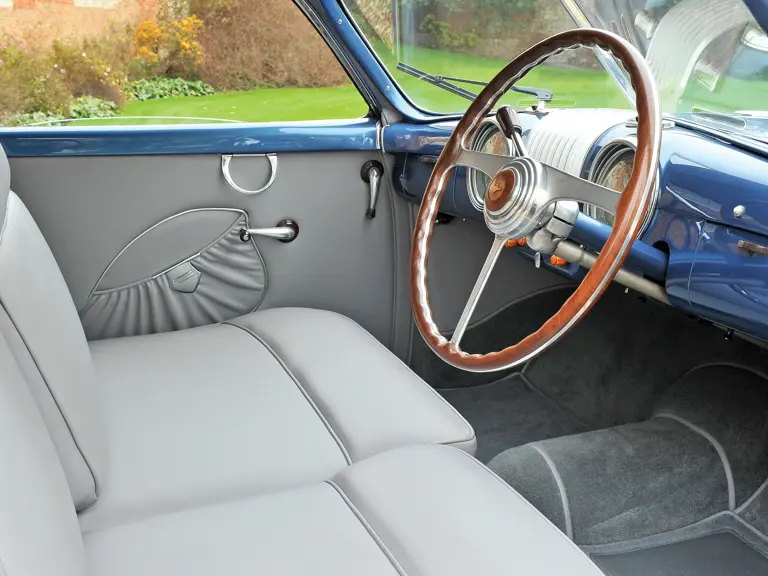
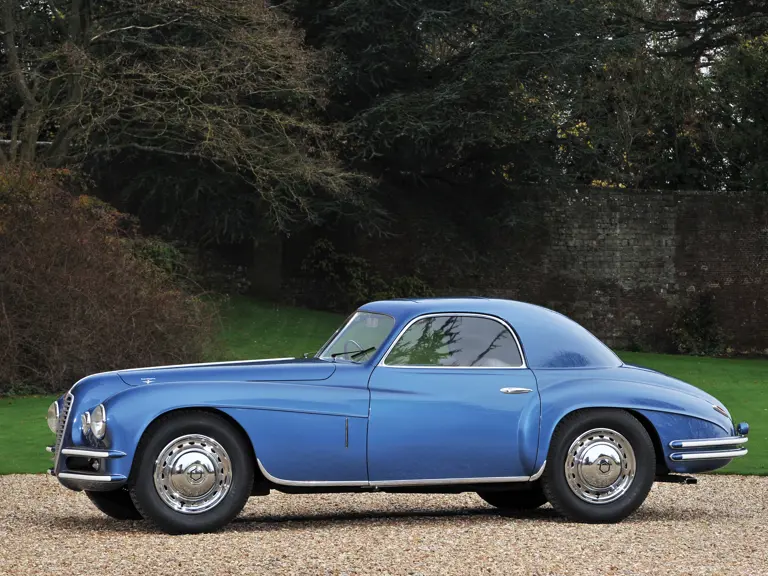
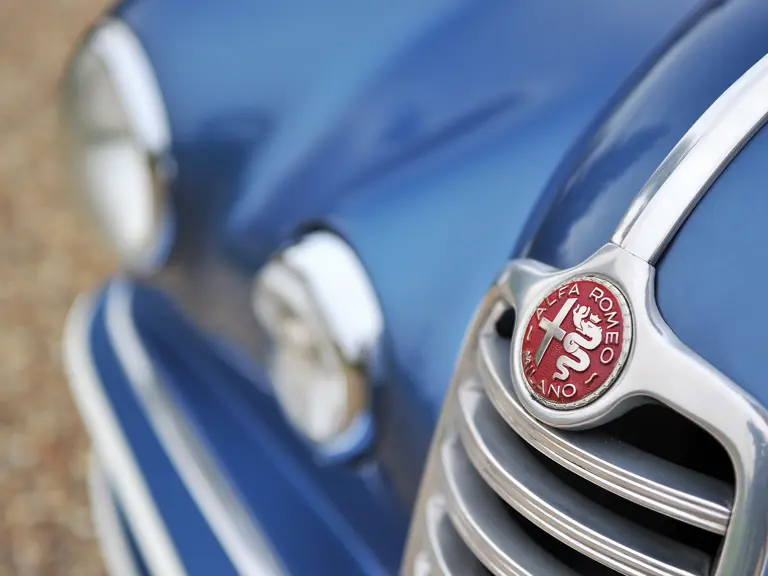
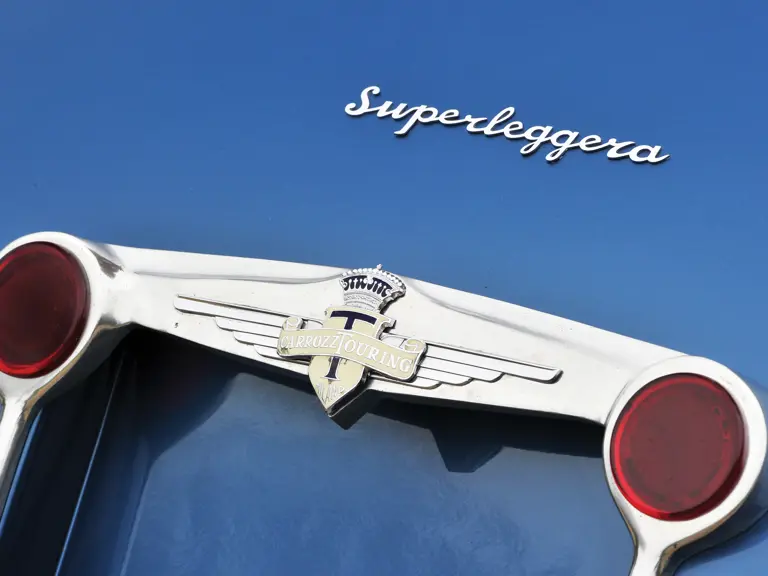
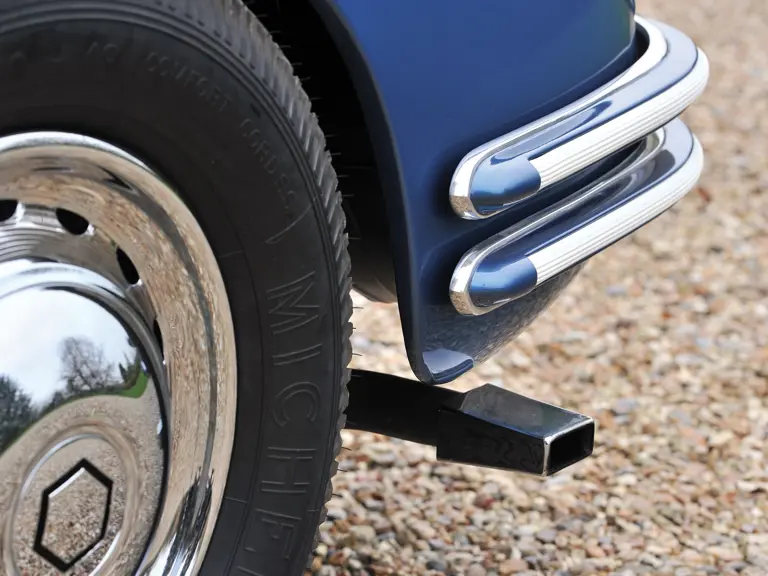

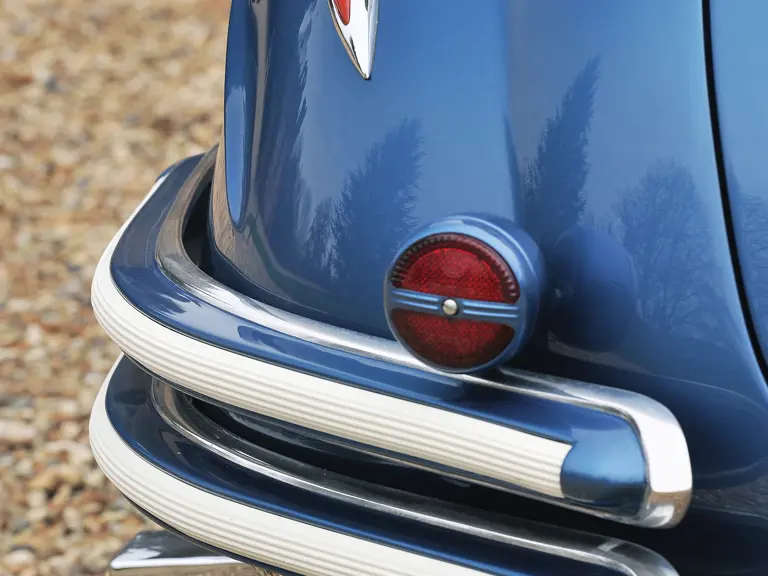
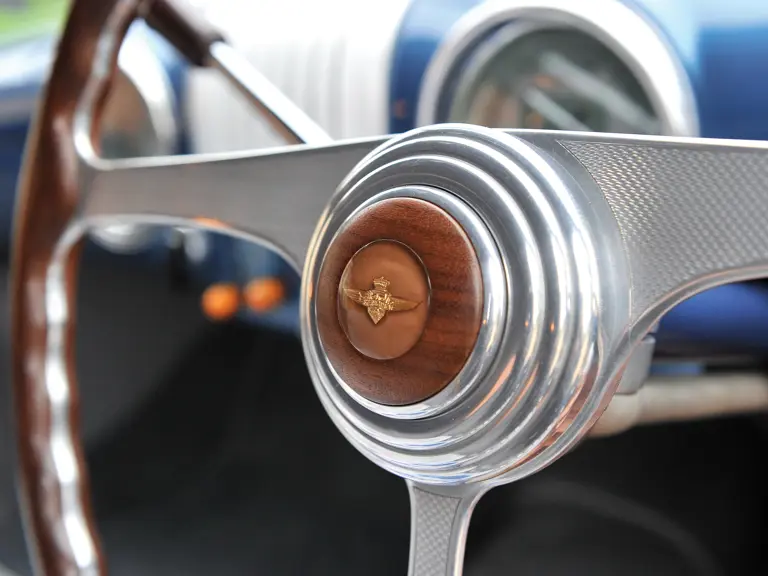
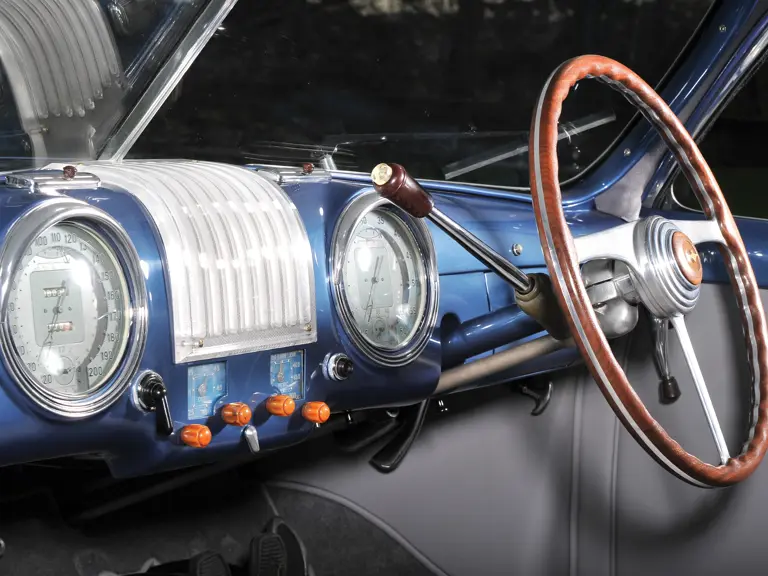
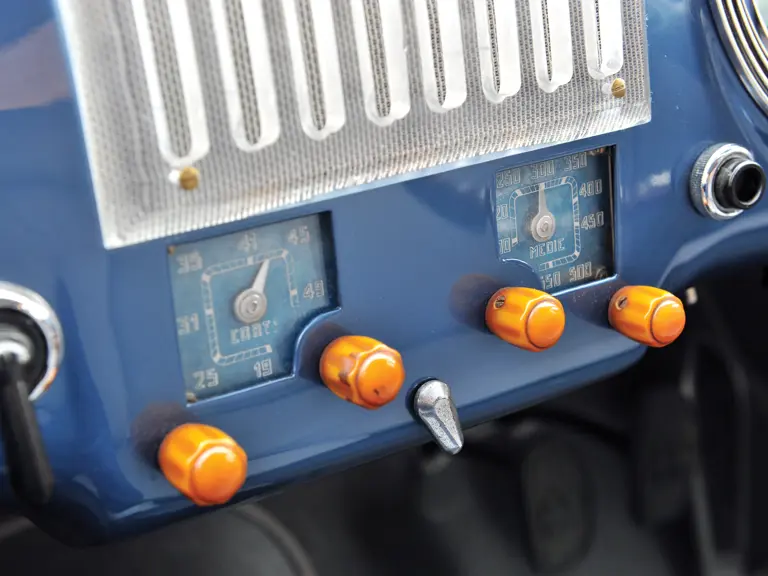
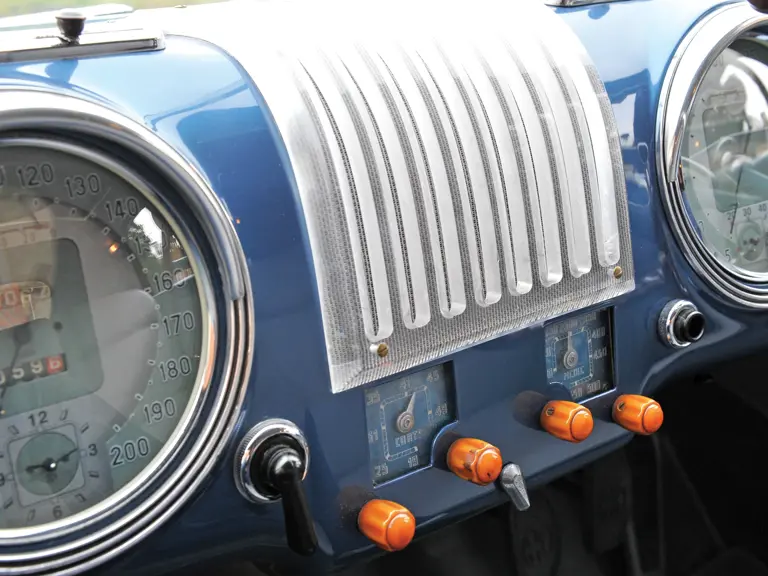
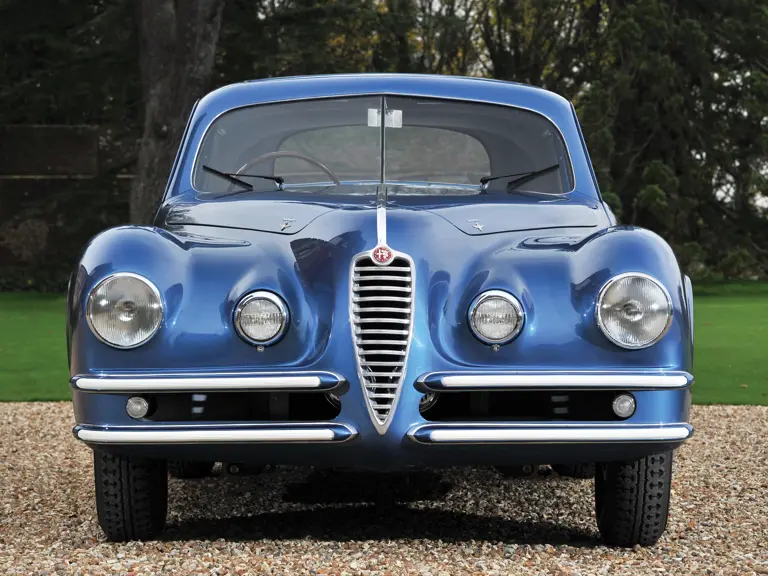

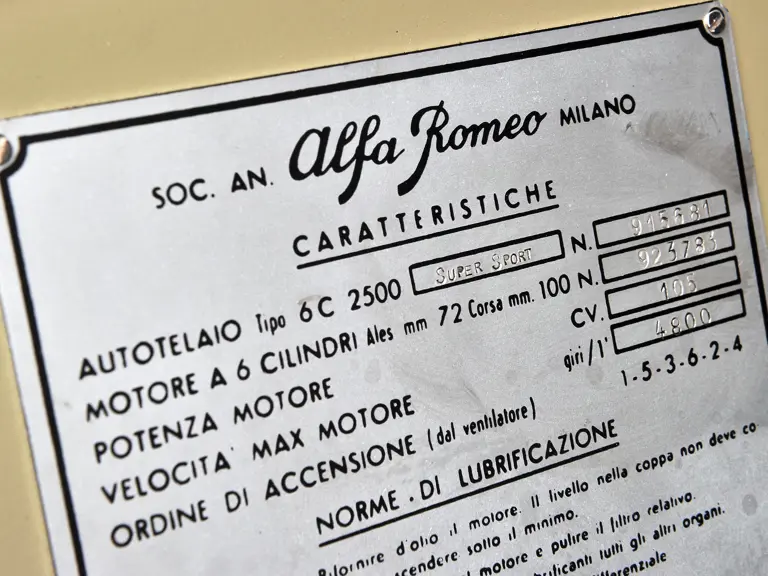
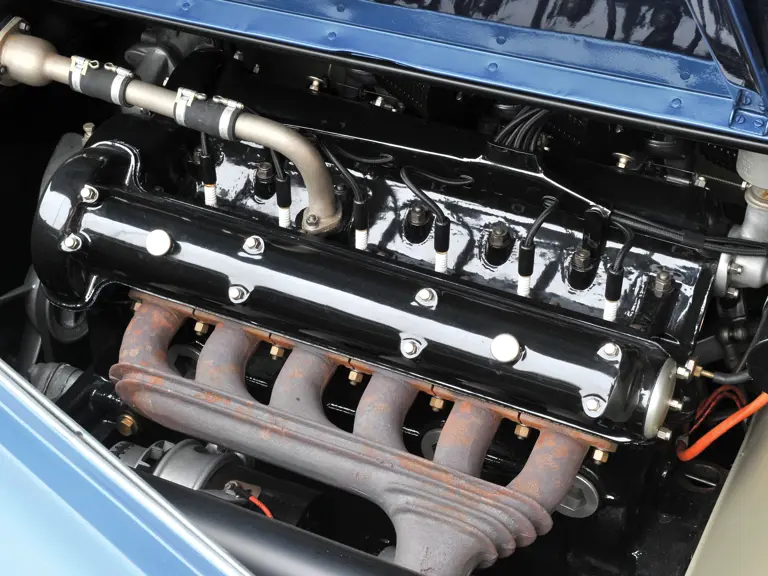
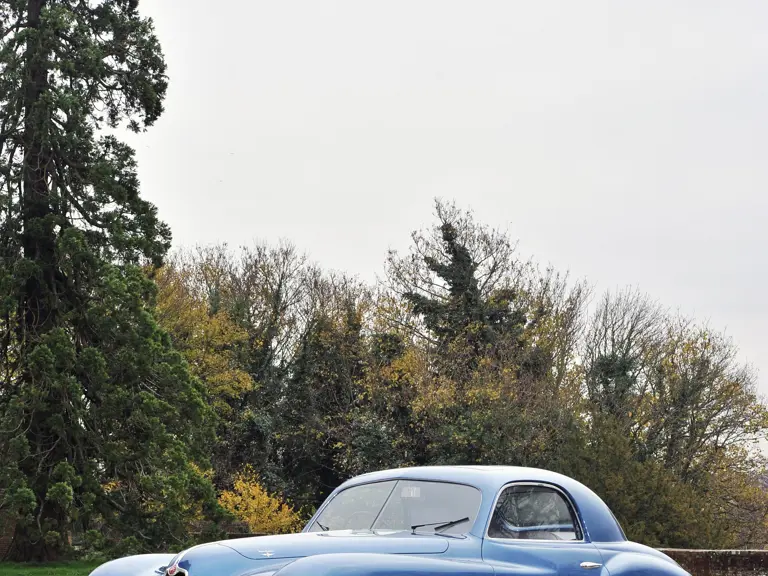
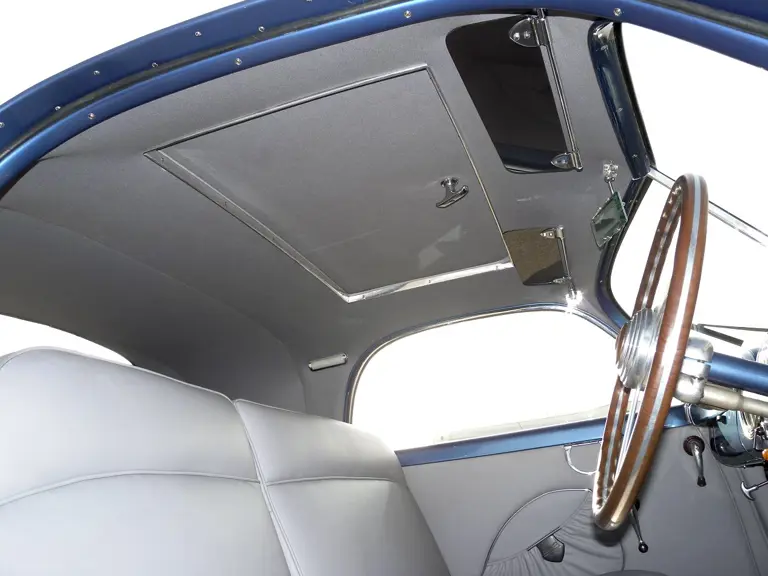
 | Paris, France
| Paris, France

